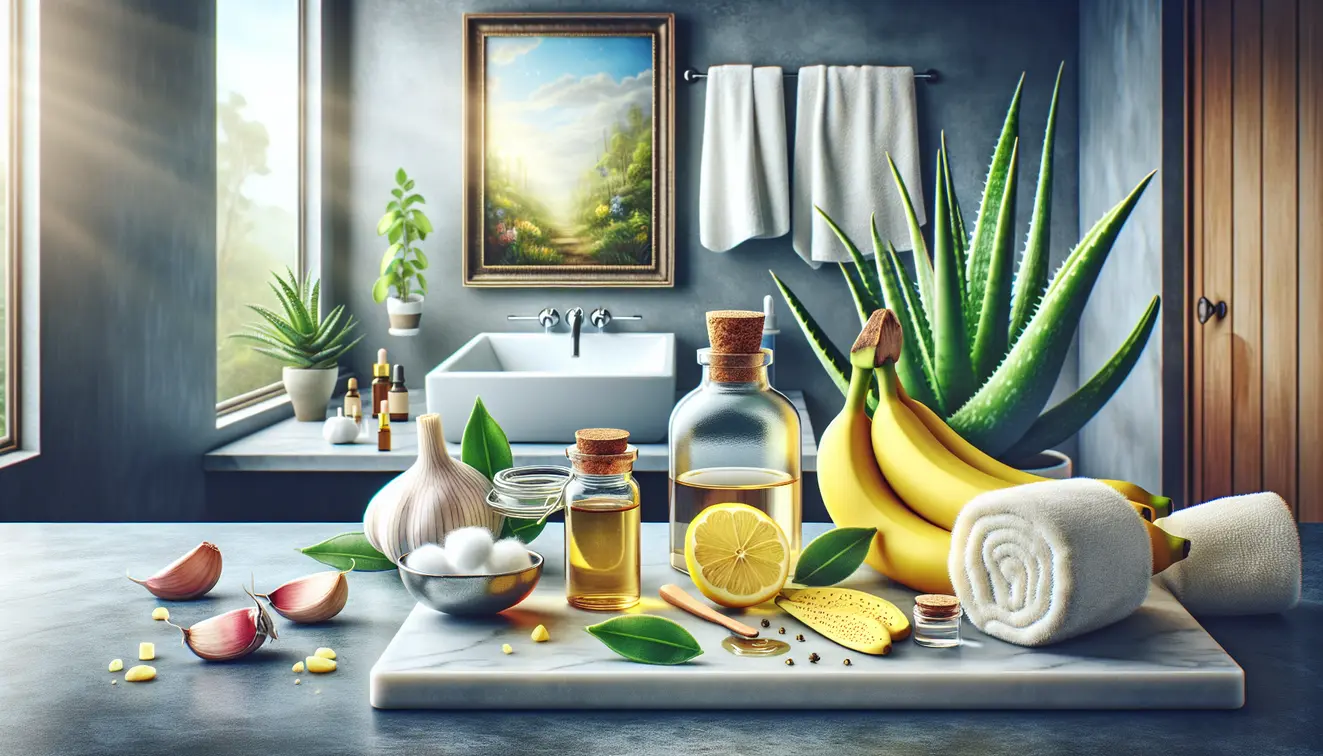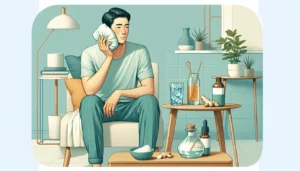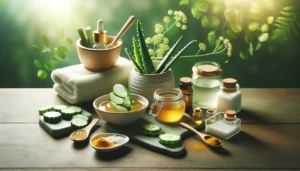Home Remedies for Warts: Safe and Effective Solutions for 2025
Estimated reading time: 10 minutes
Key Takeaways
- Warts are caused by the Human Papillomavirus (HPV) and can be addressed with natural, budget-friendly remedies.
- Popular home treatments like apple cider vinegar and salicylic acid show promising results with consistent use.
- Safety is crucial—stop any remedy if irritation occurs and consult a doctor for persistent or painful warts.
- Prevention through hygiene and immunity-boosting habits can reduce the risk of warts recurring.
Table of Contents
- 1. Introduction to Warts and Why Home Remedies Matter
- 2. What Are Warts? Causes, Types, and Risk Factors
- 3. When Should You Seek Medical Advice for Warts?
- 4. Top 10 Evidence-Based Home Remedies for Warts
- 5. Tips to Maximize the Effectiveness of Home Remedies
- 6. Safety Precautions and Risks of Home Remedies
- 7. Myths vs. Facts About Warts and Home Remedies
- 8. Preventing Warts: Long-Term Protection Tips
- 9. Home Remedies vs. Medical Treatments: A Comparison
- 10. Frequently Asked Questions (FAQs) About Warts and Remedies
1. Introduction to Warts and Why Home Remedies Matter
Warts might seem like a minor annoyance, but these small skin growths can cause real discomfort. Caused by the Human Papillomavirus (HPV), they often appear on hands, feet, or other areas, leaving many feeling self-conscious or frustrated. At WikiHomeRemedies, we understand how these bumps can impact your daily life, both physically and emotionally, and we’re here to guide you through gentle, natural solutions.
More people are turning to home remedies for warts, drawn by their ease of access and budget-friendly nature. Instead of opting for invasive procedures, many prefer exploring nature’s healing potential first. This growing interest reflects a desire for sustainable options grounded in real experience and research. Our purpose with this article is to share safe, evidence-informed remedies that prioritize your well-being. While we aim to empower you with knowledge, always consult a healthcare provider if symptoms persist or worsen. Data from the American Academy of Dermatology suggests that warts affect millions worldwide, so you’re not alone in seeking relief. Let’s explore how to address this common concern together, starting with a clear understanding of what warts are.
2. What Are Warts? Causes, Types, and Risk Factors
Warts are small, non-cancerous growths on the skin triggered by the Human Papillomavirus, commonly known as HPV. This virus sneaks into the skin through tiny cuts or scrapes, prompting cells to grow unusually. Often rough or raised, warts can show up anywhere on the body, though hands and feet are frequent targets. While they’re generally harmless, their appearance or location can cause unease or pain, especially if pressed or irritated.
Knowing the type of wart you have helps in finding the right approach. Different forms exist, each with distinct traits, and understanding these can guide your next steps. Beyond types, certain factors make some individuals more prone to developing warts. Environments or habits can play a role, and recognizing these risks empowers you to take precautions. Based on insights from the National Institutes of Health, HPV thrives in specific conditions, which we’ll break down further to help contextualize your situation.
2.1. Common Types of Warts
- Common Warts: These appear as rough, raised bumps, often on hands or fingers, with a grainy texture.
- Plantar Warts: Found on the soles of feet, they can feel painful when walking due to pressure. For more targeted solutions, check out our detailed guide on plantar issues at https://wikihomeremedies.com/home-remedies-for-plantar/.
- Flat Warts: Smaller and smoother, these often cluster on the face, neck, or legs, especially in children.
- Filiform Warts: Thin and thread-like, they typically grow around the mouth, nose, or chin area.
- Periungual Warts: These form around or under fingernails and toenails, sometimes disrupting nail growth.
Information from sources like the American Academy of Dermatology ensures these descriptions are precise, helping you identify what you’re dealing with before exploring remedies.
2.2. How Warts Spread and Risk Factors
- Skin-to-Skin Contact: Direct touch with someone who has warts can transfer the HPV virus.
- Shared Objects: Towels, razors, or shoes used by an infected person may carry the virus.
- Cuts and Abrasions: Open skin offers an entry point for HPV to settle and grow.
- Weakened Immunity: A lowered immune system, due to stress or illness, increases vulnerability.
- Public Spaces: Walking barefoot in locker rooms or pools raises exposure to contaminated surfaces.
The Centers for Disease Control and Prevention note that HPV spreads easily in moist, communal areas, making awareness of these risks a key step toward prevention.
3. When Should You Seek Medical Advice for Warts?
Not every wart needs a doctor’s visit, but certain situations call for professional input. If a wart appears on sensitive spots like the face or genitals, it’s wise to pause home treatments and seek guidance. Pain, bleeding, or signs of infection—think redness or pus—signal that self-care might not be enough. Similarly, if a wart multiplies or doesn’t budge after weeks of effort, a healthcare provider can offer tailored advice or intervention.
Some groups, like those with diabetes or weakened immune systems, face higher risks from complications. For them, even a small skin issue warrants extra caution, as healing can be slower. Aggressive DIY removal, such as cutting or burning, often leads to scarring or spreading the virus further, a concern echoed by sources like the Cleveland Clinic. We encourage exploring natural options, but safety remains paramount. Knowing when to step back and consult an expert ensures you’re caring for your skin responsibly before trying the remedies we’ll discuss next.
- Rapid Growth or Spread: If warts multiply quickly, it may indicate an underlying issue.
- Pain or Discomfort: Persistent pain beyond mild irritation suggests a need for evaluation.
- No Improvement: After 8-12 weeks of home care with no change, seek advice.
4. Top 10 Evidence-Based Home Remedies for Warts
Finding a natural way to tackle warts can feel empowering, especially with options backed by tradition and science. Below, we’ve gathered ten home remedies that many have turned to for relief. Each one comes with clear steps, possible benefits, and necessary cautions to keep you safe. Remember, warts can be stubborn, often taking weeks to fade, so patience is your ally. Let’s walk through these solutions, rooted in research from places like the Mayo Clinic, to help you address those pesky growths at home.
4.1 Apple Cider Vinegar Soaks
- What It Is: A fermented liquid from apples, known for its acetic acid content.
- How It May Work: The acid might soften the wart, possibly weakening the virus over time.
- How to Use: Dilute with equal parts water, soak a cotton ball, apply to the wart, and cover with a bandage overnight for 1-2 weeks.
- Evidence: Some dermatologists note its mild exfoliating effect, though studies are limited.
- Precautions: Stop if burning or redness occurs; avoid open wounds or sensitive skin.
4.2 Salicylic Acid (Over-the-Counter)
- What It Is: A topical treatment available in gels or pads at pharmacies.
- How It May Work: Gradually peels away wart layers by breaking down skin cells.
- How to Use: Apply as directed, often daily, after soaking the area in warm water.
- Evidence: The American Academy of Dermatology confirms its efficacy with consistent use.
- Precautions: Don’t use on irritated skin; limit to the wart to prevent damage.
4.3 Duct Tape Occlusion
- What It Is: A simple adhesive tape used to cover the wart.
- How It May Work: May deprive the wart of oxygen while irritating it to trigger immune response.
- How to Use: Cover the wart with tape for 6 days, remove, soak, and repeat.
- Evidence: Small studies suggest moderate success, though results vary widely.
- Precautions: Avoid if skin becomes sore or sticky residue irritates surrounding areas.
4.4 Garlic Application
- What It Is: A common kitchen ingredient with antiviral properties.
- How It May Work: Compounds in garlic might combat HPV and reduce wart size.
- How to Use: Crush a clove, apply to the wart, cover, and leave overnight for weeks.
- Evidence: Limited research supports antiviral effects, mostly anecdotal success.
- Precautions: Garlic can burn skin; dilute or stop if discomfort arises.
4.5 Tea Tree Oil
- What It Is: An essential oil derived from an Australian plant.
- How It May Work: Its antimicrobial nature may target the virus causing warts.
- How to Use: Dilute with a carrier oil, dab onto the wart daily, and cover.
- Evidence: Dermatologists acknowledge its antiviral potential, though more research is needed.
- Precautions: Never apply undiluted; test for allergic reactions on a small area first.
4.6 Banana Peel Rub
- What It Is: The inner side of a ripe banana skin.
- How It May Work: Enzymes might soften the wart and encourage shedding.
- How to Use: Rub the inside of the peel on the wart nightly, then cover.
- Evidence: Purely anecdotal, with no strong scientific backing yet.
- Precautions: Safe for most, but stop if skin reacts unusually.
4.7 Aloe Vera Gel
- What It Is: A soothing gel from the aloe plant’s leaves.
- How It May Work: May hydrate and calm skin, possibly aiding wart breakdown.
- How to Use: Apply fresh gel to the wart, cover, and repeat daily.
- Evidence: Minimal data; often praised for skin healing in traditional use.
- Precautions: Rare allergies exist; ensure you’re using pure gel without additives.
4.8 Castor Oil with Baking Soda
- What It Is: A thick oil mixed with a mild abrasive powder.
- How It May Work: May exfoliate the wart while oil softens surrounding skin.
- How to Use: Mix into a paste, apply to the wart, cover for several hours daily.
- Evidence: Limited to user reports; no major studies support this combo.
- Precautions: Baking soda can irritate; rinse off if stinging occurs.
4.9 Vitamin C Paste
- What It Is: Crushed vitamin C tablets mixed with water.
- How It May Work: Acidity might erode the wart and boost local immunity.
- How to Use: Make a paste, apply to the wart, cover, and reapply daily.
- Evidence: Anecdotal support; vitamin C’s skin benefits are understudied here.
- Precautions: Avoid if skin becomes raw or overly dry from application.
4.10 Lemon Juice
- What It Is: Freshly squeezed juice from lemons, high in citric acid.
- How It May Work: Acidic content might break down wart tissue over time.
- How to Use: Dab juice on the wart with cotton, cover, repeat twice daily.
- Evidence: Traditional remedy with little formal research backing efficacy.
- Precautions: Stop if stinging worsens; protect surrounding skin from irritation.
5. Tips to Maximize the Effectiveness of Home Remedies
Getting the most out of natural wart treatments often comes down to small, thoughtful habits. Start by softening the skin with a warm water soak for 10-15 minutes before applying any remedy. This simple step helps the treatment penetrate deeper, boosting its potential to work. Consistency matters too; stick to your chosen method daily, as skipping applications can slow progress.
Beyond application, a few practices can support your efforts. The American Academy of Dermatology suggests gentle exfoliation with a pumice stone—only if painless—to remove dead skin. Covering the wart with a bandage after treatment prevents spreading the virus to other areas or people. Don’t share towels or personal items during this time, as hygiene plays a big role. Progress might take weeks, sometimes months, but keep at it. Your patience, paired with these small tweaks, can make a real difference while tying into broader steps to prevent recurrence.
- Clean Tools: Sterilize any file or stone used to avoid reinfection.
- Protect Skin: Apply petroleum jelly around the wart to shield healthy areas.
- Track Changes: Note size or discomfort weekly to gauge improvement.
6. Safety Precautions and Risks of Home Remedies
Exploring natural solutions for warts feels rewarding, but caution keeps the process safe. Many remedies, like apple cider vinegar or tea tree oil, can irritate skin if overused or applied improperly. Redness, burning, or itching means it’s time to pause and reassess. If discomfort lingers beyond a day or two, rinse off any residue and give your skin a break.
Certain groups need extra care with these approaches. Children, pregnant individuals, or those with sensitive skin should avoid harsher options without guidance. People with conditions like diabetes must watch for any sign of infection, as minor issues can escalate. The Mayo Clinic warns that pain, swelling, or no change after 8-12 weeks signals a need for professional input. We encourage natural healing at WikiHomeRemedies, but not at the expense of your health. Stay mindful of your body’s signals while using these methods.
- Allergic Reactions: Rash or hives may indicate sensitivity to a remedy.
- Overuse Risks: Excessive application can damage healthy skin nearby.
- Infection Signs: Pus or warmth around the wart requires immediate attention.
7. Myths vs. Facts About Warts and Home Remedies
Misinformation about warts spreads as easily as the virus itself, often clouding judgment. Many believe old tales or quick fixes found online, but separating fact from fiction builds a clearer path to relief. Let’s tackle some widespread ideas that don’t hold up under scrutiny, grounding our understanding in science from sources like the Centers for Disease Control and Prevention. By clearing the haze, we empower you to focus on what truly helps with warts.
- Myth: Touching frogs or toads causes warts.
Fact: Warts come from HPV, a human virus, not animals. - Myth: Home remedies work overnight.
Fact: Most treatments, even medical ones, require weeks of persistence. - Myth: Warts always mean poor hygiene.
Fact: While cleanliness helps, anyone can contract HPV through contact or environments.
Debunking these notions helps you approach wart care with realistic expectations. Armed with accurate insights, you’re better prepared to prevent and manage them effectively as we move into practical long-term strategies.
8. Preventing Warts: Long-Term Protection Tips
Stopping warts before they start often hinges on mindful daily choices. Good hygiene, like washing hands regularly and keeping skin dry, creates a barrier against the HPV virus. Public spaces such as pools or gyms harbor risks, so wearing flip-flops in shared showers or locker rooms cuts exposure. These simple actions, supported by the CDC, form a strong first line of defense.
Lifestyle also shapes your vulnerability to warts. A diet rich in fruits and vegetables bolsters immunity, helping your body fend off infections. Managing stress through rest or exercise further supports this natural shield. For broader protection, consider the HPV vaccine, which targets certain viral strains linked to warts. While not a cure for existing growths, it’s a preventive step worth discussing with a healthcare provider. Together, these habits weave a safety net, reducing the chances of dealing with warts down the road.
- Avoid Barefoot Walks: Shoes in communal areas prevent direct viral contact.
- Moisturize Skin: Intact, hydrated skin resists cuts where HPV enters.
- Strengthen Immunity: Prioritize sleep and nutrition for overall resilience.
9. Home Remedies vs. Medical Treatments: A Comparison
Deciding between home remedies and medical treatments for warts depends on your situation. Natural options often appeal due to lower costs and easy access—just a trip to your kitchen or local store. They suit mild cases where patience isn’t an issue, though results vary and may take weeks or months. On the other hand, medical approaches like cryotherapy or laser removal, often guided by dermatologists, target stubborn warts with quicker outcomes but at a higher price and potential discomfort.
Weighing both paths involves looking at efficacy and personal needs. Insights from the Cleveland Clinic highlight that professional treatments carry risks like scarring, while home methods might irritate if misused. For severe or spreading warts, a doctor’s expertise often outweighs DIY efforts. Below, a table breaks down key differences to help you choose wisely, keeping your health and circumstances in focus.
| Aspect | Home Remedies | угодноMedical Treatments |
|---|---|---|
| Cost | Low (often under $10) | Higher ($50-$500 depending on method) |
| Accessibility | Easy, available at home or stores | Requires clinic visits or prescriptions |
| Speed of Results | Slow (weeks to months) | Faster (days to weeks) |
| Risk of Side Effects | Mild irritation possible | Scarring or pain in some cases |
| Suitable For | Mild, non-sensitive warts | Severe, persistent, or facial warts |
10. Frequently Asked Questions (FAQs) About Warts and Remedies
How long do home remedies take to work on warts?
Results vary, but most remedies need 4-12 weeks of daily use. Persistence matters, as warts resist quick fixes. The Mayo Clinic notes that gradual improvement is normal with consistent effort.
Are home remedies safe for children?
Some, like aloe vera, are gentler, but harsher options like salicylic acid require caution. Always consult a pediatrician first, as children’s skin is more delicate, per American Academy of Dermatology guidance.
Can warts disappear without treatment?
Yes, some warts resolve on their own within months or years as immunity fights HPV. However, waiting risks spreading, so intervention often helps, according to the NIH.
Do home remedies work for all wart types?
Effectiveness depends on the wart’s location and type. Plantar warts, for instance, may resist due to pressure on feet. Tailor approaches and seek advice if uncertain. For additional insights on plantar-related concerns, explore our guide at https://wikihomeremedies.com/home-remedies-for-plantar-fasciitis/.
What if a wart returns after treatment?
Recurrence happens if HPV lingers in the skin. Strengthen prevention with hygiene and consider medical options for persistent cases, as WebMD suggests.










